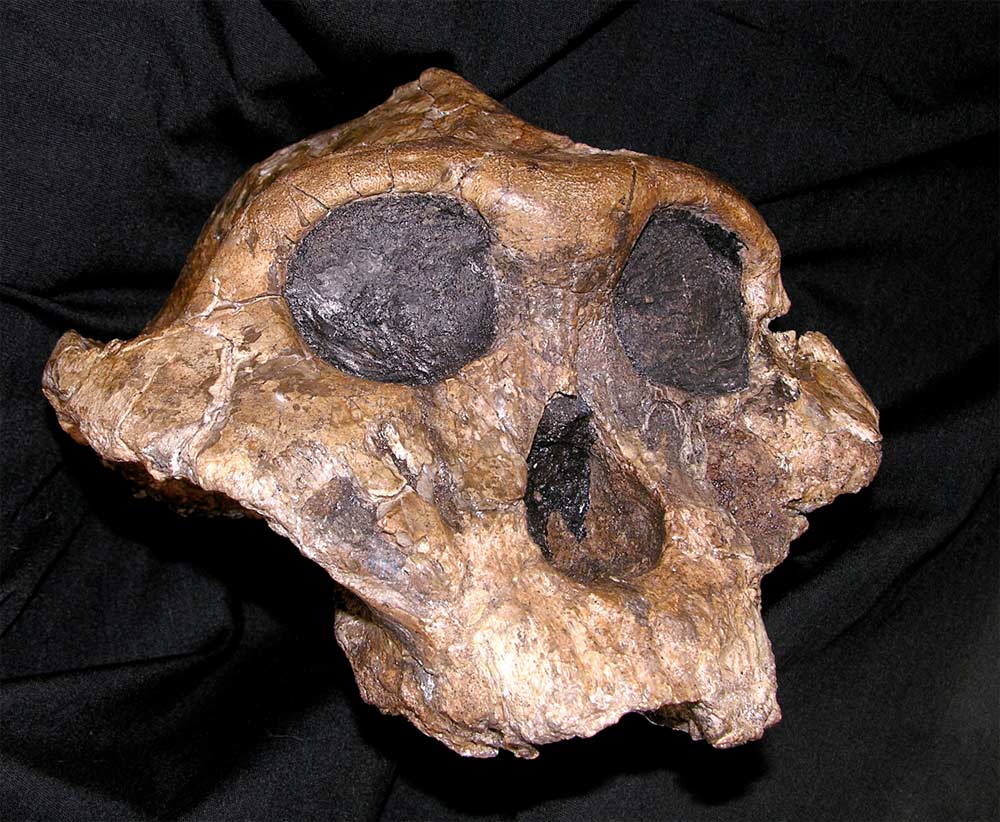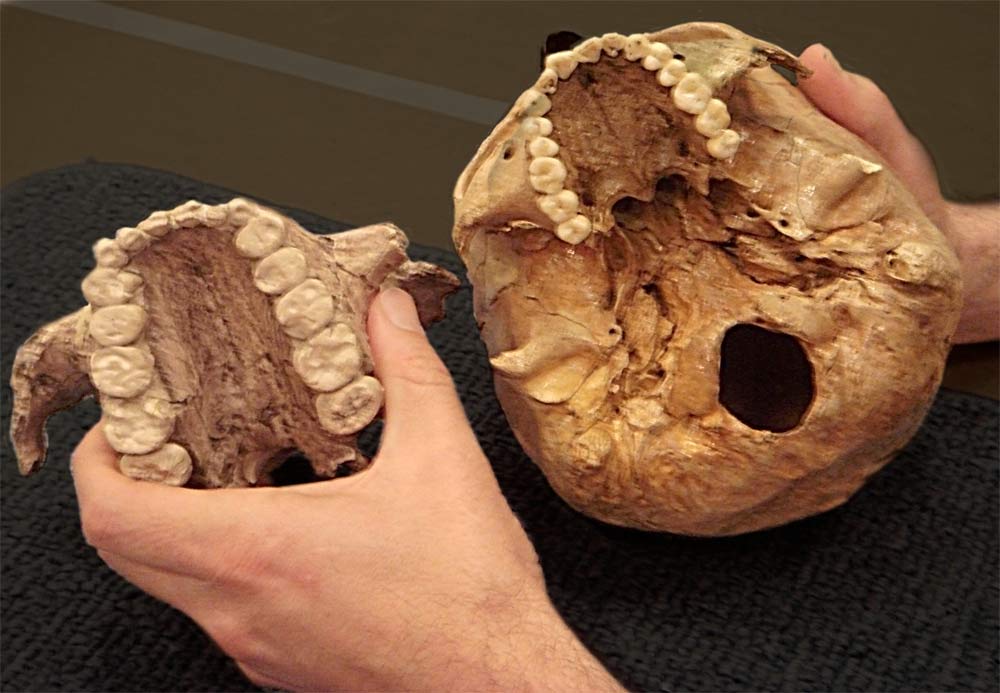'Nutcracker Man' Ate Like a Cow (or Pig)

The strong-jawed human relative nicknamed "Nutcracker Man" likely didn't crack nuts at all, preferring to graze on grass like a cow instead, scientists find.
These findings could dramatically alter conventional wisdom regarding what the earliest members of the human lineage and their relatives ate.
The extinct hominid, officially called Paranthropus boisei, ranged across East Africa 1.2 million to 2.3 million years ago, living side-by-side with the direct ancestors of humanity. It earned its nickname because of its massive jaw and huge molars. [Human Origins: Our Crazy Family Tree]
"Nutcracker Man never has been used in the scientific literature, but that's the common name," said researcher Thure Cerling, a geochemist at the University of Utah.
It was long assumed that because of its powerful jaw, P. boisei lived up to its nickname and ate nuts, seeds and other hard items. Still, a recent study of its teeth did not turn up the kind of pitting one would expect from hard meals, hinting that it actually dined on softer fare.
Now scientists investigating carbon isotope ratios in Nutcracker Man's teeth found "it most likely was eating grass, and most definitely was not cracking nuts," Cerling said. [Image of Nutcracker skull]
"Frankly, we didn't expect to find the primate equivalent of a cow dangling from a remote twig of our family tree," said researcher Matt Sponheimer at the University of Colorado at Boulder. "Fortunately for us, the work of several research groups over the last several years has begun to soften prevailing notions of early hominid diets. If we had presented our new results at a scientific meeting 20 years ago, we would have been laughed out of the room."
Get the world’s most fascinating discoveries delivered straight to your inbox.
Clues in tooth enamel
The researchers drilled enamel off 24 teeth collected in central and northern Kenya from 22 P. boisei that lived between 1.4 million and 1.9 million years ago. They pulverized approximately 2 milligrams of enamel per tooth to look at the carbon isotopes within. All carbon isotopes have six protons in their atoms, but they differ from each other in how many neutrons they have in their nuclei -- for instance, carbon-12 has six, while carbon-13 has seven.
By looking at the carbon isotope ratios in tooth enamel, scientists can decipher the past diet. The method relies on the type of carbon used in photosynthesis, the process in which carbon dioxide and water, with energy from the sun, are turned into food for certain plants. For instance, trees and the leaves, nuts and fruits they produce, as well as shrubs, herbs and cool-season grasses, all rely on C3 photosynthesis, which prefers carbon-12, while tropical grasses and sedges such as papyrus rely on C4 photosynthesis, where both carbon-12 and the heavier carbon-13 isotope are used.
The scientists found that P. boisei did not eat nuts or other C3 items, but chewed more heavily on grasses than any early human, human ancestor or human relative studied to date. Their rugged jaws may have helped them munch on tough grass.
"This is a great and important study -- it reminds us that in paleontology, things are not always as they seem," paleoanthropologist Peter Ungar of the University of Arkansas in Fayetteville, who did not take part in this research, told LiveScience.
Nutcracker Man ate like a pig
"We have been looking at this organism through the wrong lens, which may have led to significant distortions in our understanding of its biology, ecology and evolution," Sponheimer told LiveScience.
The diet of Nutcracker Man apparently averaged about 77 percent grasses and sedges, virtually indistinguishable from the diets of the ancestors of zebras, pigs, warthogs and hippos that lived at the same time. "They were competing with them," Cerling said. "They were eating at the same table."
No living ape feeds mostly on grass, and the practice is rare among primates. "There is one primate that is primarily a grass-eater, the gelada baboon in Ethiopia," Cerling told LiveScience, and Ungar noted the wear and tear seen on P. boisei teeth "looks very similar to that of the gelada baboon."
These findings might significantly alter current thinking on the diets of early humans and human relatives. Scientists had thought human ancestors in the australopithecines, which include the famous 3-million-year-old Ethiopian fossil Lucy, also possessed tooth and head features suggesting they ate hard items such as nuts.
"P. boisei greatly extends the range of potential diets for early human lineages," Cerling said, adding that carbon isotope ratios in australopithecine teeth should now be studied.
Approximately 2.5 million years ago, researchers suggest the australopithecines split into the genus Homo, which produced our species, and the genus Paranthropus, which dead-ended. So what led Paranthropus to die off? It could have been direct competition with Homo, which grew more skilled in tool use over time, or it could have been a variety of other factors, including having a slower reproductive rate, Sponheimer said.
"This hominid had a diet fundamentally different from that of all living apes, and, by extension, favored very different environments," Sponheimer said. "Having a good idea of where these ancient creatures lived and what they ate helps us understand why some early hominids left descendants and others did not."
Future research could study the ancestors of Nutcracker Man. "What led to the stage where these individuals were so dependent on grass for their diet?" Cerling asked.
The scientists detailed their findings online May 2 in the Proceedings of the National Academy of Sciences.
Follow LiveScience for the latest in science news and discoveries on Twitter @livescience and on Facebook.




